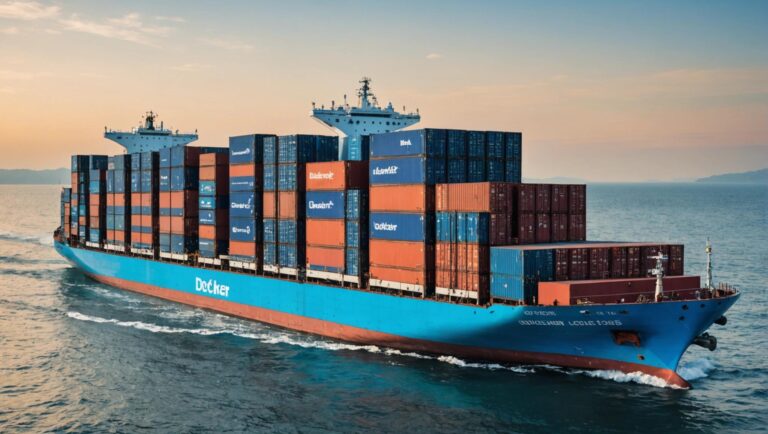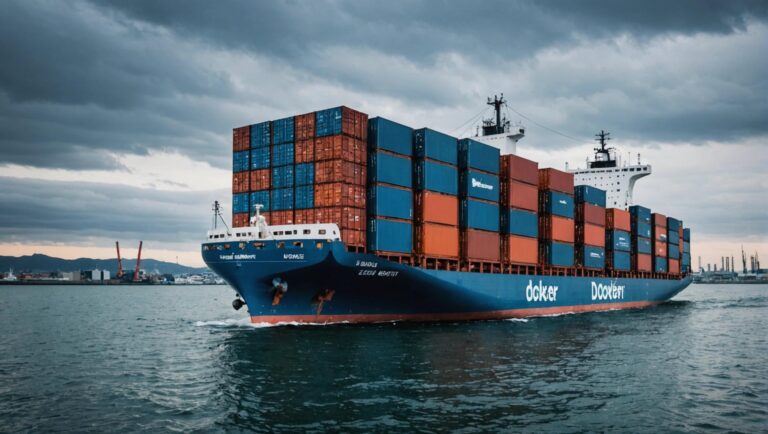Welcome to the world of maximizing Application Insights with Docker logs! In today’s fast-paced digital landscape, the ability to effectively harness and analyze log data is crucial for ensuring the optimal performance of your applications. By leveraging Docker logs, a powerful tool for collecting and managing log information from containerized applications, you can gain valuable insights into the behavior of your systems, troubleshoot issues efficiently, and enhance overall performance. This introduction sets the stage for exploring how the combination of Application Insights and Docker logs can revolutionize the way you monitor and optimize your applications. Get ready to dive deep into the realm of log management and discover how to unlock the full potential of your applications with this dynamic duo!

Utilizing Docker Logs for Application Insights
Integration of Docker with Application Insights
Integrating Docker with Application Insights allows organizations to gain valuable insights into the performance and behavior of their applications running in Docker containers. By collecting and analyzing logs generated by Dockerized applications, teams can effectively monitor and troubleshoot issues, ultimately improving the overall reliability and efficiency of their systems. Moreover, the integration enables tracking metrics like response times, request rates, and resource utilization, providing a comprehensive view of application performance.
Benefits of Analyzing Docker Logs
Analyzing Docker logs offers numerous benefits, including real-time visibility into application behavior, identification of performance bottlenecks, proactive detection of errors, and improved security through anomaly detection. Furthermore, leveraging advanced analytics tools on Docker logs can help predict issues before they impact the application, leading to enhanced reliability and uptime. The insights derived from log analysis can also aid in capacity planning, resource optimization, and compliance adherence.
Implementation Techniques
There are several implementation techniques that organizations can employ to effectively utilize Docker logs for application insights. This includes setting up centralized log management systems, leveraging log aggregation tools, implementing structured logging practices, integrating with automated anomaly detection solutions, and utilizing machine learning algorithms for predictive analysis. By integrating Docker logs with performance monitoring tools, organizations can automate the detection of patterns and anomalies, enabling proactive troubleshooting and optimization.
Real-World Use Cases
To illustrate the practical applications of Docker log analysis, consider a scenario where an e-commerce platform uses Docker logs to track user interactions, monitor transaction processing times, and detect fraudulent activities in real-time. By correlating log data with user behavior analytics, the platform can enhance personalization, optimize marketing campaigns, and improve overall customer experience. Similarly, in the healthcare industry, Docker log analysis can assist in monitoring patient data flows, ensuring data integrity, and complying with regulatory requirements.
The effective utilization of Docker logs for application insights is instrumental in driving digital transformation and operational excellence. By harnessing the power of Docker logs through integration, analysis, and innovative techniques, organizations can achieve enhanced performance, security, and scalability in their containerized environments.
Best Practices for Maximizing Application Insights
Optimizing Log Collection
In order to maximize the benefits of Application Insights, it is crucial to optimize log collection. Implementing efficient logging mechanisms and ensuring that logs are properly structured can significantly enhance the quality and relevance of the data collected. By fine-tuning the logging process, developers can capture essential information about the application’s performance, user interactions, and any potential errors or exceptions. This detailed log data is instrumental in troubleshooting issues, identifying performance bottlenecks, and making informed decisions to enhance the overall user experience.
Leveraging Log Analysis Tools
Utilizing advanced log analysis tools can provide valuable insights into the performance and behavior of your application. These tools go beyond simple log viewing and offer features such as log aggregation, real-time monitoring, trend analysis, and anomaly detection. By leveraging these tools, developers can gain a deeper understanding of their application’s behavior, detect patterns that may indicate impending issues, and optimize performance proactively. Additionally, some log analysis tools integrate machine learning algorithms to predict potential issues based on historical data, enabling teams to take preventive actions before problems escalate.
Ensuring Security and Compliance
Security and compliance should be top priorities when it comes to maximizing Application Insights. Protecting sensitive data within logs and adhering to industry regulations like GDPR and HIPAA are crucial for maintaining user trust and avoiding legal repercussions. Implementing encryption mechanisms for log data, setting up access controls, and regularly auditing log activities are essential steps in safeguarding the integrity and confidentiality of the insights gathered. Moreover, ensuring compliance with data retention policies and promptly addressing security vulnerabilities are key practices to uphold the security posture of your application insights infrastructure.
Continuous Monitoring and Improvement
Apart from the initial setup and optimization, continuous monitoring and improvement are essential for maximizing the value of Application Insights. Regularly reviewing log data, analyzing trends, and identifying areas for enhancement can help in detecting emerging issues early on, optimizing resource allocation, and ensuring the overall health of the application. Implementing automated alerting systems based on predefined metrics can notify teams about potential problems in real-time, enabling swift responses and proactive problem resolution. By establishing a culture of continuous monitoring and improvement, organizations can stay ahead of challenges, enhance operational efficiency, and deliver a superior user experience.
Collaboration and Knowledge Sharing
Effective collaboration and knowledge sharing among team members play a vital role in maximizing the benefits of Application Insights. Encouraging cross-functional communication, sharing insights gained from log data analysis, and fostering a culture of learning and innovation can lead to collective problem-solving, improved decision-making, and accelerated development cycles. By leveraging the diverse expertise within the team and promoting a collaborative environment, organizations can harness the full potential of Application Insights and drive continuous improvement across all facets of application development and performance.
By following these best practices, organizations can not only maximize the utility of Application Insights but also enhance the reliability, security, and performance of their applications while providing a seamless user experience. Embracing a holistic approach that encompasses efficient log collection, advanced analysis, robust security measures, continuous monitoring, and collaborative engagement can empower teams to extract actionable insights, drive informed decisions, and drive innovation in application development and operations.
Challenges and Solutions
Common Challenges in Monitoring Docker Logs
- Ensuring log visibility across multiple containers
- Managing log volume and storage
- Identifying and troubleshooting log anomalies
Strategies to Overcome Logging Obstacles
- Implement centralized logging solutions like ELK stack
- Utilize log aggregation tools such as Fluentd or Splunk
- Set up log rotation and retention policies
- Monitor log metrics and set up alerts for anomalies
Containerization has become a popular choice for deploying applications. Docker, being a leading container platform, offers various benefits but also presents challenges when it comes to monitoring logs effectively.
One common challenge faced by DevOps teams is ensuring log visibility across multiple containers. With microservices architecture and container orchestration tools like Kubernetes, logs are scattered across different containers, making centralized monitoring a daunting task.
Another significant challenge is managing log volume and storage. Containers generate a large volume of logs, which can quickly consume disk space if not managed efficiently. This can lead to performance issues and hinder troubleshooting efforts.
Moreover, identifying and troubleshooting log anomalies poses a challenge. Detecting abnormal patterns or errors within a sea of log data requires sophisticated monitoring tools and analytics capabilities.
To overcome these logging obstacles, organizations can implement centralized logging solutions like the ELK stack (Elasticsearch, Logstash, Kibana). This approach streamlines log management by aggregating logs from various containers into a single platform for easy monitoring and analysis.
Additionally, leveraging log aggregation tools such as Fluentd or Splunk can help consolidate logs from multiple sources and provide real-time insights into containerized applications.
Setting up log rotation and retention policies is essential to control log file sizes and prevent storage issues. By defining proper log management strategies, organizations can ensure efficient log retention without compromising critical log data.
Furthermore, monitoring log metrics and establishing alerts for anomalies enable proactive identification of issues before they escalate. By defining threshold values for log metrics and implementing alerting mechanisms, DevOps teams can respond swiftly to potential problems and maintain system reliability.
By understanding the common challenges in monitoring Docker logs and implementing effective strategies to overcome logging obstacles, organizations can enhance their containerized infrastructure’s monitoring capabilities and ensure smooth operations in a containerized environment.
Conclusion
Leveraging Docker logs is a powerful way to maximize Application Insights. By effectively monitoring and analyzing log data generated by Docker containers, organizations can gain valuable insights into the performance, security, and overall health of their applications. This proactive approach not only helps in identifying issues quickly but also allows for continuous improvement and optimization of the software development process. Embracing Docker logs as a key component of Application Insights can lead to enhanced efficiency, reliability, and scalability in modern software environments.







